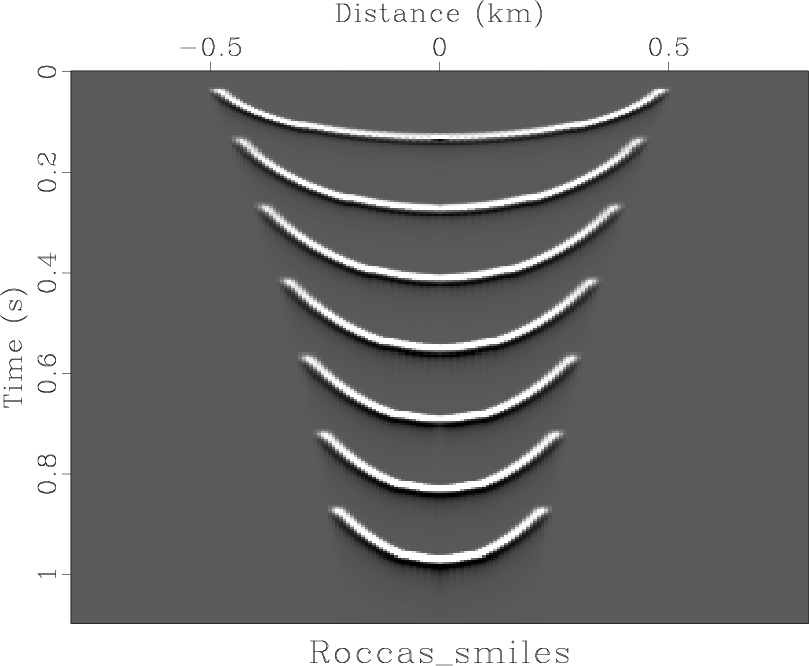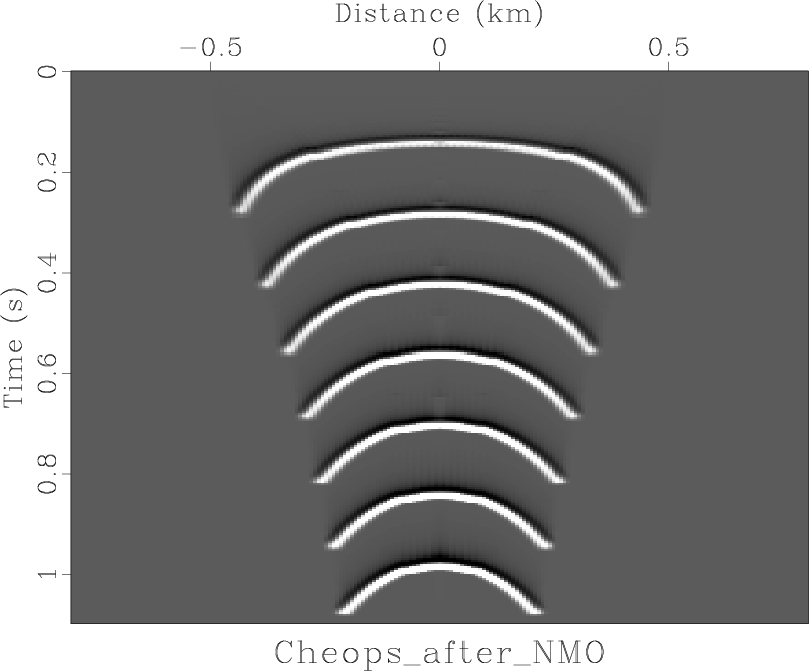|
|
|
|
Dip and offset together |
Instead of implementing equation (8.28)
in one step we can split it into two steps.
The first step converts raw data at time ![]() to NMOed data at time
to NMOed data at time ![]() .
.
The second step is the DMO step which
like Kirchhoff migration itself
is a convolution over the ![]() -axis (or
-axis (or ![]() -axis) with
-axis) with
Now the program.
Backsolving equation (8.30) for ![]() gives
gives
In figures 8.24 and 8.25, notice the big noise reduction over Figure 8.18.
|
dmatt
Figure 24. Impulse response of DMO and NMO |

|
|---|---|
|
|
|
coffs
Figure 25. Synthetic Cheop's pyramid |

|
|---|---|
|
|
|
|
|
|
Dip and offset together |